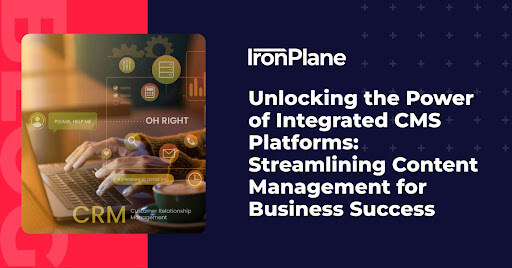Exploring Channel Dynamics: A High-Level Guide for Furniture Manufacturers in eCommerce
Explore the significance of eCommerce channel opportunities while learning the pitfalls of channel conflict as they pertain to furniture manufacturing.
12 min read
 Tim Bucciarelli
:
March 21, 2022
Tim Bucciarelli
:
March 21, 2022

According to Hubspot, "Omnichannel is a lead nurturing and user engagement approach in which a company gives access to their products, offers, and support services to customers or prospects on all channels, platforms, and devices." This is not only an effective approach; it is getting more crucial as businesses transform their marketing initiatives to meet the needs and habits of consumers.
As consumers continue to navigate the eCommerce landscape through their digital devices, it's vital to build a cohesive marketing strategy across all channels in today's multi-channel world. From in-store to online to networking events, consistent branding and messaging around your products and services will ensure you address your customers at every point of their journey, no matter what channel or device.
In addition, offering a seamless shopping experience and an easy transition from offline to online is an essential strategy to building your community of loyal customers, increasing customer referrals, and creating a long-lasting business.
In this article, we will discuss the top 5 omnichannel marketing channels for eCommerce stores and offer some key takeaways and best practices to help your business create a cohesive multi-channel strategy, increase customer engagement, and boost revenue across channels.
Your website is one of the most important marketing channels for any business. Therefore, making your website a top priority is vital for eCommerce brands. Here are a few industry statistics:
First impressions are everything. Therefore, having a dynamic, user-friendly website is an invitation for your customers to get to know your brand, view your product offerings, and gain a better understanding of your business.
Since the majority of consumers research online before making a purchase, showcasing your products and highlighting key attributes with stunning photography will help increase conversions and overall sales. In fact, 81% of retail shoppers conduct online research before buying, and the overwhelming majority of retail consumers start their journey with online research.
Additionally, a well-designed eCommerce website is crucial to showing up in Google search results, which helps consumers discover your brand online or find your brick-and-mortar location.
For eCommerce brands, some of the most critical aspects of your website are your online catalog, product pages, cart checkout, and website speed. From security to theme updates to marketing automation, keeping your website updated will help boost sales and increase your bottom line.
Most importantly, choosing a website platform is key. Depending on the size of your business, number of SKUs, and product complexities, choosing the right platform that will help your business scale for the future is vital. Learn more about eCommerce platforms and solutions by visiting Magento Development and BigCommerce Development.
For brick-and-mortar store owners, this channel allows you the greatest opportunity to interact directly with your customers, gather real-time feedback, and represents the overall feel and essence of your brand. So when you get your customers in the store, it's best to make the most of each opportunity. Here are a few key strategies for your in-store channel:
One of the most important ways to build long-term relationships with your customers is to provide a high level of service. Most customers who visit brick-and-mortar stores are not shopping by price but are looking for a more personalized experience. Specifically, for more technical products or higher-end luxury goods such as furniture, customers are looking for more detailed information and product demonstrations.
Thus, training your staff and sales professionals to build relationships with your customers will have a significant impact on customer loyalty, repeat business, and eCommerce revenue.
When it comes to branding and messaging, you will want to ensure a cohesive brand messaging across all of your marketing channels. Specifically, make sure your store, website, and social media reflect the same message, promotions, and deals.
For example, use the same colors, logos, and messaging guidelines across channels. Most importantly, you want to present your brand, and your brand values, in the same way, whether your customer walks into your store or visits your website.
While this may vary by industry and product lines, providing a unique and engaging experience for your customers is a valuable tool for building long-lasting customer relationships and enticing repeat business.
For instance, if you own a surf shop, having a casual and laid-back attitude with your customers is totally in line with the personality of your brand. However, if you are selling a highly technical product or fine jewelry, it makes more sense to have a polished and professional approach.
As a Marketing Manager at a PGA TOUR SuperStor, a national chain of golf stores, the main objective is to give every customer a country club experience. Thus, from a personalized greeting to world-class customer service, this means we treat everyone like they are a VIP.
From contests to giveaways, special in-store promotions are a great way to get customers into your store. It's amazing how far a person will drive just to enter a small giveaway. Additionally, giveaways are a great way to collect email addresses for future follow-ups.
Engaging with your customers is vital to the success of the in-store experience. Thus, having your staff fully aware and attentive goes a long way when it comes to making customers happy.
Product Demos with Staff or Manufacturers
Depending on your business type and product lines, inviting manufacturer representatives to conduct in-store product demonstrations and answer customer questions can help increase sales. In addition, this adds legitimacy and gives your customers a better perception of your store and products.
Having elements that drive your in-store customers online and your online customers in-store is key to optimizing your sales channels. Therefore, creating yearly and seasonal promotional plans like contests, classes, seminars, and promotions, will help you increase your customer base and allow you to collect emails for future follow-up and marketing campaigns.
Your website is more than just a catalog of products. Creating a dynamic and engaging website will keep your customers coming back. Thus, keeping your home page updated with new promotional events and featured products will entice consumers, increase conversion rates, and boost eCommerce revenue. So what do you promote to keep customers engaged? Here are a few eCommerce best practices and online promotional ideas:
Feature New Product Introductions and Releases
Rotating your featured products and announcing new arrivals on your home page will help increase eCommerce sales. For example, creating promotional events and a digital marketing game plan for new product releases or services can help generate buzz and drive traffic to your website. Additionally, most manufacturers have seasonal releases of their product lines, which will give you additional content ideas for your merchanding and promotional plans.
It is important to keep content on your website fresh and up to date. Having outdated content or discontinued products on your website can lead to disappointment and frustrations for your customers. Plus, this will increase your bounce rate and lead to a loss of sales opportunities. In addition, it reflects poorly on your brand and the legitimacy of your eCommerce store. Finally, you want your customers to feel secure in their purchase decisions and confident in your customer service.
There's a reason social proof from your friends across social media channels influences eCommerce purchases. Thus, adding product reviews on your website can have a significant impact on conversion rates and sales. You can also include staff picks and recommendations to further entice online purchases.
Customer reviews help add legitimacy to your brand and are a great way to set yourself up as an authority on the products you sell. In addition to written reviews, video reviews and testimonials are powerful marketing tools to encourage online purchases and can also help with SEO.
Since you will want to include only legitimate reviews from your customers, you may want to set up rules and parameters and approve reviews before they are published on your website.
Did I say videos yet? Along with being one of the most effective content marketing mediums, videos are a great way to feature more technical and complex products. Additionally, once you create a library of engaging video content, you can publish these videos (or video clips) across your social media channels and YouTube to increase website traffic and boost brand discovery. Finally, building your YouTube channel offers you a significant opportunity for brand exposure and finding new customers.
Once you have them onsite, you want to provide your customers with any additional information they may need to help them with their purchasing decisions. Thus, creating an FAQ section or FAQ page on your website will allow you to answer common questions about shipping, payment options, privacy statements, etc. In addition, for more technical or complex products or services, you can add an FAQ section directly on the product page.
About Us Page and Featured Staff
Let your customers know who you are. With an endless supply of eCommerce stores to choose from, why should they buy from you? Creating an About Us page allows you to humanize your brand. It's also a great place to tell your story, share your mission statement, and showcase your amazing staff. Most importantly, this helps your team develop relationships with your customers and enables you to build a community of loyal customers.
Digital marketing is a science all its own, and we can discuss digital marketing strategies and tactics for days. However, for this particular blog article, we will discuss how it fits into building your omnichannel marketing strategy and community.
SEO - Search Engine Optimization
Search engine optimization (SEO) is a highly technical side of marketing and is crucial in getting customers to your website. If you do not have an SEO expert in-house, it's best to hire an experienced agency who will work closely with you to understand your business, complete in-depth keyword research, and bring you qualified traffic to increase sales. Visit our eCommerce SEO Services page to learn more about SEO strategies to increase traffic and find new customers.
Most display (Google ads) are re-marketing or retargeting ads. Thus, after you have visited a specific website, you will see these banner ads across Google. Once again, keeping in line with best practices, it's best to stay consistent with your colors, branding, and messaging. Our experienced eCommerce ad experts take an innovative and strategic approach using the latest technologies in digital advertising to optimize campaign performance and deliver a high return on ad spend (ROAS).
Email Marketing
Email is still one of the strongest digital marketing channels. Email marketing helps build brand loyalty with existing customers and creates excitement for new subscribers. When it comes to email campaigns, content will be the main driver for clicks, conversions, and, ultimately, revenue. Thus, for eCommerce brands, creating engaging subject lines and featuring best-selling products in your email campaigns will deliver the most conversions and sales.
Social media - today, you have to pay to be seen. There really isn't an organic way to do this. Even the largest website with a million followers has to pay to play. So while investing in your social media, be sure it is a consistent and up-to-date message you are putting out there.
Affiliate programs generate qualified leads, increase website traffic, and increase sales. Affiliate partners promote your products with no upfront fees and are only paid a commission if a referral results in a sale. Besides being a great way to boost eCommerce revenue, affiliate marketing allows you to build a loyal community. Thus, by partnering with bloggers and other content creators in your industry and offering incentives (commissions) to send their readers to your site, you increase traffic and overall sales. It's a win-win. In addition, it provides social proof about your products/services and offers immediate validity from the influencer's audience.
Along with your other omnichannel marketing strategies for in-store, website, and events, it's best to create holistic and integrated digital marketing campaigns with consistent messaging and branding. For the most part, digital marketing campaigns will be the leading driver of traffic to your website.
Therefore, mapping out your digital marketing game plan should take precedent and should not be overlooked. Most importantly, compared to other media, digital marketing still offers a bigger bang for the buck than print, radio, or television.
Building a community around your business is a great way to create customer loyalty and get referrals. In addition, using events in and outside of your place of business can be a fun, effective, and rewarding way to let people know about your company and products.
When event planning, look at the possible opportunities for each event in terms of brand exposure, sales leads, and overall attendance. Thus, when considering hosting or attending events, determine:
Strategy is key to everything, but since events have a short run time, planning is key to having a successful (and profitable) event. Be sure you have everything you need without bringing the kitchen sink, unless you sell kitchen sinks. Most importantly, research the type of attendees and businesses to determine if they are a good fit for your products.
To booth or not to booth? Depending on your product or service, determine if you need to invest in a booth. If you do decide to make the investment to present at a trade show, here are a few best practices for a successful event:
Today, there are several opportunities to network, and with the proliferation of remote work, you can now attend many events from your desk, phone, or in person. For example, with Zoom or Google Meet, you can now easily attend a networking event without additional travel time or investment. Although nothing takes the place of attending events and networking face-to-face, online events offer further opportunities to connect with your customers and prospects in real-time.
Hosting a seminar or event at your place of business is a great way to get patrons into your store or office space. In addition, some of your suppliers or sales rep can host events at their factories or other event locations. Plus, you can hire an event planner and offer your store or office space as an event venue, which increases brand exposure for your company and gets customers into your store.
Currently, in-person events are slowly coming back, so look out for targeted events you can attend. Again, be prepared with your elevator pitch, business card, or digital connection at the ready.
During the event, stay casual and open to everyone you meet. They may not be your exact target client, but they have a whole sphere of influence of their own. So never discount saying hello and treating everyone like they are your next big client.
These can have multiple layers of benefits, or they could possibly fall flat. Again, it is all about determining who is your ideal client or prospect, will they be attending the event, and do they have an interest in speaking to you about your products and services.
Specifically, if you are sponsoring an event with banners or other collateral, make sure to finalize placement and determine what type of pre and follow-up exposure you will get. Here are a few types of charity events and sponsorship opportunities:
These are where you can get to know your customers on a personal level. They have almost no cost and have lots of benefits.
To make the most of your marketing initiatives and ensure a high return on ad spend (ROAS), hiring an innovative eCommerce marketing agency can help you achieve your revenue targets and company goals. From SEO to paid social to affiliate marketing, we offer a full range of custom digital marketing services tailored for eCommerce brands.
IronPlane is an eCommerce marketing agency and eCommerce Solutions Partner that provides integrated services tailored to your business goals. Schedule a free consultation today.
Channel dynamics in eCommerce refer to the evolving interactions and performance metrics across multiple sales and marketing channels. This includes the interplay between online marketplaces, social media platforms, owned websites, and brick-and-mortar outlets. Understanding these dynamics is crucial because it allows businesses to optimize channel mix, allocate resources effectively, and ensure consistent customer engagement. This integrated approach not only drives sales but also enhances brand recognition and customer loyalty.
Channel dynamics directly influence how businesses attract and retain customers by shaping the customer journey. Each channel offers unique touchpoints—from search engine marketing and email campaigns to social media ads and influencer partnerships—which contribute to building brand awareness and trust. By analyzing performance data across channels, businesses can refine targeting strategies, personalize customer experiences, and ultimately improve conversion rates and retention. A balanced, data-driven channel strategy ensures that businesses remain agile in meeting evolving customer preferences.
To optimize channel dynamics, businesses should adopt a multi-pronged approach:
Implementing these practices enables businesses to maximize revenue potential and maintain a competitive edge in a rapidly evolving digital landscape.

Explore the significance of eCommerce channel opportunities while learning the pitfalls of channel conflict as they pertain to furniture manufacturing.

In today's digital landscape, efficient content management is a cornerstone of business success. By integrating Content Management Systems (CMS) platforms, organizations can streamline their content management processes, enhance operational efficiency, and deliver seamless experiences across multiple channels.

Learn how executing integrated digital marketing campaigns across multiple channels can help boost eCommerce sales and create a more unified campaign.